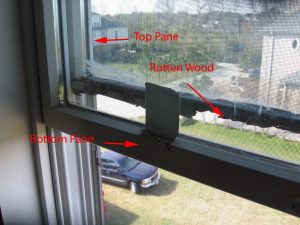Clad wood windows are attractive and supposedly practical. These windows are clad on the outside with either vinyl or metal. The window interior is bare wood. The idea is to have an attractive interior and a protected exterior that is pre-finished and needs little or no maintenance. Read Consulting examined metal clad wood windows that had failed to stop water intrusion from heavy rain. Examination revealed that the wood behind the cladding had rotted, almost to powder. thus, the windows could no longer seal the building envelope. Because these windows are exposed to the elements (which includes changes in temperature and humidity) the cladding seals are open over time. The seal openings allow water to get behind the exterior cladding. Once behind the cladding, the water cannot escape.In the warm months temperatures behind the cladding reach 150°F. This is perfect composting conditions and the wood behind the cladding can rapidly rot. Basically metal clad windows were incapable of performing their intended function. Visually they looked clean and sound; however they were rotten behind the cladding and not capable of protecting the interior of the building from water intrusion.
Many houses in the southern US are air conditioned, and the windows are never opened. This allows the rot to be hidden and remain undiscovered until there is a storm and the windows leak. Below are photographs of metal clad windows that failed during a hurricane.






